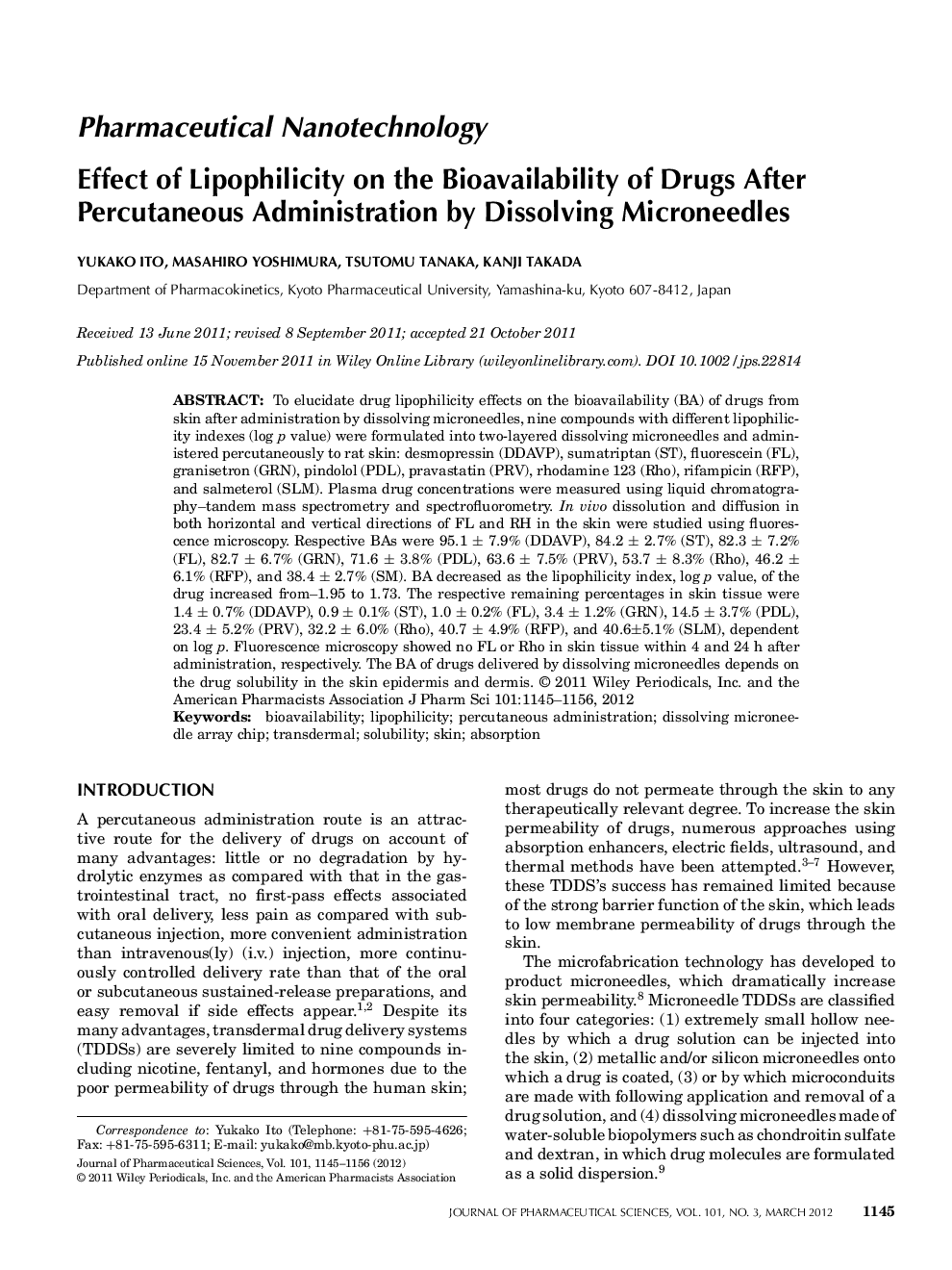| Article ID | Journal | Published Year | Pages | File Type |
|---|---|---|---|---|
| 2486002 | Journal of Pharmaceutical Sciences | 2012 | 12 Pages |
Abstract
To elucidate drug lipophilicity effects on the bioavailability (BA) of drugs from skin after administration by dissolving microneedles, nine compounds with different lipophilicity indexes (log p value) were formulated into two-layered dissolving microneedles and administered percutaneously to rat skin: desmopressin (DDAVP), sumatriptan (ST), fluorescein (FL), granisetron (GRN), pindolol (PDL), pravastatin (PRV), rhodamine 123 (Rho), rifampicin (RFP), and salmeterol (SLM). Plasma drug concentrations were measured using liquid chromatography-tandem mass spectrometry and spectrofluorometry. In vivo dissolution and diffusion in both horizontal and vertical directions of FL and RH in the skin were studied using fluorescence microscopy. Respective BAs were 95.1 ± 7.9% (DDAVP), 84.2 ± 2.7% (ST), 82.3 ± 7.2% (FL), 82.7 ± 6.7% (GRN), 71.6 ± 3.8% (PDL), 63.6 ± 7.5% (PRV), 53.7 ± 8.3% (Rho), 46.2 ± 6.1% (RFP), and 38.4 ± 2.7% (SM). BA decreased as the lipophilicity index, log p value, of the drug increased from-1.95 to 1.73. The respective remaining percentages in skin tissue were 1.4 ± 0.7% (DDAVP), 0.9 ± 0.1% (ST), 1.0 ± 0.2% (FL), 3.4 ± 1.2% (GRN), 14.5 ± 3.7% (PDL), 23.4 ± 5.2% (PRV), 32.2 ± 6.0% (Rho), 40.7 ± 4.9% (RFP), and 40.6±5.1% (SLM), dependent on log p. Fluorescence microscopy showed no FL or Rho in skin tissue within 4 and 24 h after administration, respectively. The BA of drugs delivered by dissolving microneedles depends on the drug solubility in the skin epidermis and dermis.
Related Topics
Health Sciences
Pharmacology, Toxicology and Pharmaceutical Science
Drug Discovery
Authors
Yukako Ito, Masahiro Yoshimura, Tsutomu Tanaka, Kanji Takada,
